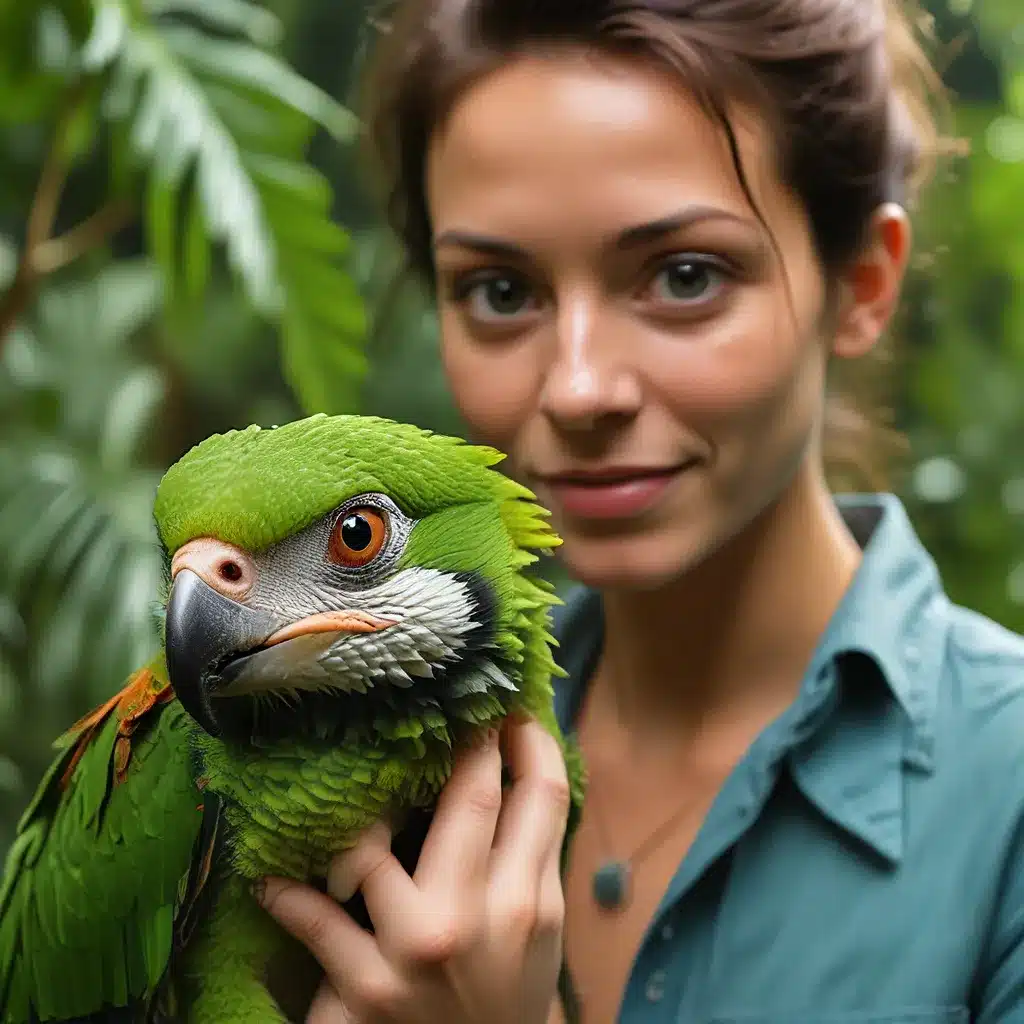
Have you ever dreamed of owning a slice of the rainforest right in your own home? With the rise of exotic pet ownership, that dream might be closer to reality than you think. But as the popularity of these unique creatures grows, so too do the challenges of balancing their care with the conservation of their natural habitats. It’s a delicate dance that requires a careful understanding of both the animals and the environments they come from.
Rainforest Refugees: The Allure and Peril of Exotic Pets
When it comes to exotic pets, the rainforest is a veritable treasure trove of captivating creatures. From the striking Argentine black and white tegu to the mysterious pangolin, these animals capture our imaginations with their vibrant colors, unique behaviors, and connection to the lush, mysterious worlds they call home. And let’s be honest – who wouldn’t want a mini-dinosaur like the tegu roaming around their living room?
Argentine black and white tegus are just one example of the rainforest refugees that have found their way into the exotic pet trade. Sadly, the desire to own these incredible animals has had devastating consequences for their wild populations. As demand skyrockets, poachers and illegal traders have stripped entire regions of their native wildlife, leaving delicate ecosystems in disarray.
But the rainforest’s woes don’t end there. The illegal timber trade has also taken a massive toll, with vast areas of forest being razed to the ground each year to feed the world’s appetite for precious woods. The impact on biodiversity is catastrophic, as entire species of plants and animals are wiped out before we even have a chance to discover them.
The Tegu Takeover: Lessons from an Invasive Species
As if the rainforest’s troubles weren’t enough, some of these exotic pets have found their way into our own backyards – and they’re causing quite a ruckus. Take the Argentine black and white tegu, for example. These large lizards have established thriving populations in Florida, where they’re wreaking havoc on the delicate balance of the state’s native ecosystems.
According to the Florida Fish and Wildlife Conservation Commission, tegus are “not native to Florida and are considered an invasive species due to their impacts to native wildlife.” These voracious predators have been documented preying on the eggs and hatchlings of everything from alligators and crocodiles to gopher tortoises and sea turtles – all while competing with their Florida counterparts for valuable resources.
The tegu’s success as an invader is a cautionary tale for anyone considering adding an exotic pet to their family. These animals are often remarkably adaptable, and when they escape or are released into the wild, they can quickly establish themselves as a dominant force – with devastating consequences for the local environment. It’s a perfect example of how the allure of exotic pets can quickly turn into an ecological nightmare if not handled with the utmost care and responsibility.
Responsible Ownership: Balancing Pets and Conservation
So, what’s the solution to this complex conundrum? The answer lies in a delicate balance between our desire for unique and fascinating pets and our commitment to protecting the natural world. It’s a balance that requires education, empathy, and a deep respect for the animals we share this planet with.
As the World Wildlife Fund points out, not all exotic pets are created equal when it comes to their suitability for captive care. Some species, like the tegu, require specialized diets, habitats, and care that can be challenging for the average pet owner to provide. And let’s not forget the emotional needs of these intelligent creatures – they’re not just living decorations, but sentient beings that deserve our compassion and consideration.
But that doesn’t mean exotic pet ownership is off the table entirely. By doing your research, investing in the proper care and equipment, and committing to the long-term responsibility of these animals, you can enjoy the wonder of the rainforest while still being a responsible steward of the natural world. And who knows – your passion for exotic pets might even inspire you to get involved in conservation efforts, helping to protect the very habitats these amazing creatures call home.
Becoming a Rainforest Guardian: Small Steps, Big Impact
So, you’re ready to dive into the world of exotic pets, but you want to do it the right way. Where do you start? Well, my friend, the first step is to do your homework. Spend time learning about the specific species you’re interested in – their natural histories, habitat requirements, and unique care needs. Reach out to experienced exotic pet owners, veterinarians, and conservation organizations to get the inside scoop.
Once you’ve done your due diligence, it’s time to take the plunge. But before you rush out and bring home your new scaled or feathered friend, consider getting involved in the Golden Exotic Pets community. Here, you’ll find a wealth of resources and support to help you navigate the world of responsible exotic pet ownership. From tips on setting up the perfect habitat to advice on navigating the legal landscape, this community is here to help you become a true guardian of the rainforest.
And who knows – your newfound passion for exotic pets might just inspire you to take your conservation efforts to the next level. Maybe you’ll volunteer with a local wildlife rehabilitation center, or even lend a hand in reforestation projects in the heart of the Amazon. Every small step you take can make a big difference in preserving the incredible diversity of our planet’s most precious ecosystems.
So, are you ready to embark on this incredible journey? The rainforest is waiting, and with a little bit of care and a whole lot of wonder, you can be the one to make a lasting difference. Let’s get started, shall we?

